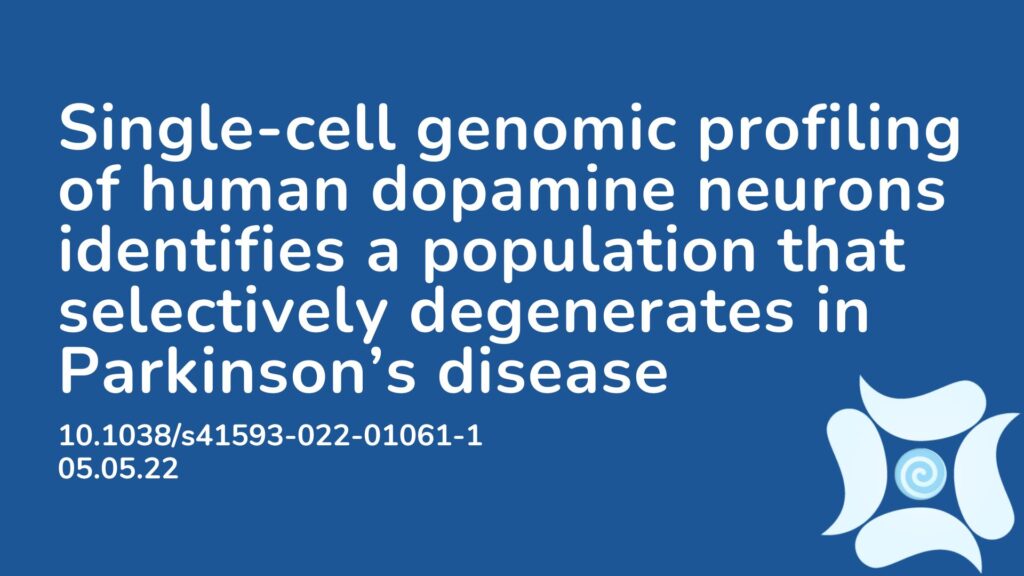Summary: It is a defining feature of Parkinson’s disease (PD) that it is linked with the gradual death of dopamine neurons in the substantia nigra, however the molecular structure and specific vulneribilities of these neurons in the pathophysiology of PD is unknown. This paper has identified the molecular features of the neurons that die in PD, using a single cell RNA sequencing, to identify which genes are active or not. The researchers looked at the cells of eight people who agreed to donate their brains to research after their death. These eight people did not have PD during the course of their life. The researchers found ten different types of dopamine-producing cells in the substantia nigra, however when applying the same technique to individuals who had died and had PD, they only found one of these typse of cells. This indicates that these brain cells died whilst the second cohort of people were alive. These findings will allow a much better understanding of the causes of PD, as well as a way to target treatment.
Abstract: The gradual death of dopamine neurons in the substantia nigra has been a defining feature of Parkinson’s Disease (PD), however the molecular structure and specific vulnerabilities of these neurons in the pathophysiology of PD is unknown. This paper has identified the molecular features of the neurons that die in PD, using a single cell RNA sequencing, to identify which genes are active or not. The researchers looked at the cells of eight people who agreed to donate their brains to research after their death. These eight people did not have PD during the course of their life. The researchers found ten different types of dopamine-producing cells in the substantia nigra, however when applying the same technique to individuals who had died and had PD, they only found one of these types of cells. This indicates that these brain cells died whilst the second cohort of people were alive. These findings will allow a much better understanding of the causes of PD, as well as ways to target treatment.
Article Publication Date: 05.05.22
DOI: 10.1038/s41593-022-01061-1




